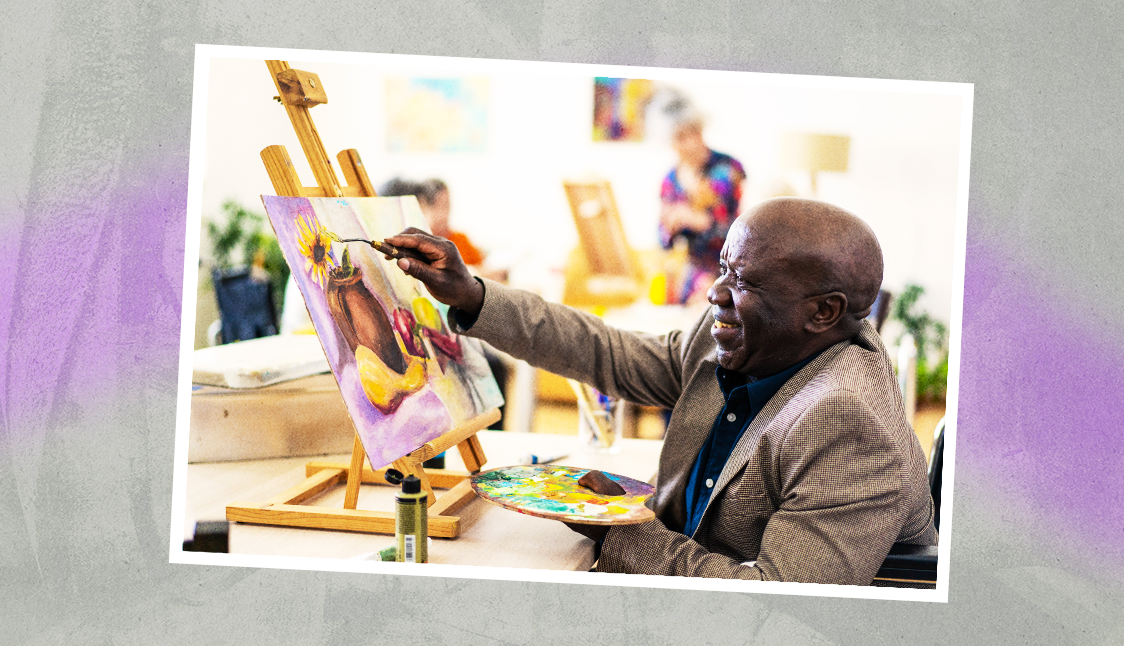AARP Hearing Center


If your loved one has dementia or even mild cognitive impairment, you’ll need to make the conventional home modifications an older person needs — and a great many others.
Unintentional falls are the leading cause of injury or death for adults 65 and older, according to the federal Centers for Disease Control and Prevention (CDC). The risks for those with dementia are even greater. A 2023 analysis in Alzheimer’s & Dementia that used data from the National Health and Aging Trends study, found that older people with dementia fell more often than their peers without dementia — about 15 percentage points more. Almost half of the adults who were studied fell within a 12-month period.
People with Alzheimer’s disease or other forms of dementia see the world in an unfamiliar, often confusing way. Everyday observations can be frightening — an oil spot can be perceived as a hole, shadows may be seen as sinister beings, a stranger may appear in the mirror.
Change is daunting. So take small steps when adding safeguards to help a dementia patient.
A checklist can help you with dementia home care
Take a tour of your house, looking at it from your loved one’s compromised point of view. Dementia affects balance, cognitive abilities, coordination, depth perception, memory and strength. People with the disease have difficulty adapting to change, accurately interpreting the world around them, making sound choices and understanding instructions.
Even if your loved one is still managing well, prepare your house for the future, ideally before your loved one moves in. Little things — such as rearranging the furniture — can seem sudden and unsettling. Big changes such as redecorating can be alarming.
AARP’s printable prep list can help you evaluate your home.
Surprising situations, solutions to be aware of
Starting outside your home, walk around and scribble a to-do list. The items below are meant to help you think about potential dangers. Your loved one’s doctors and others can suggest additional safety measures.
Get expert advice to help protect dementia patients
Contact your local Area Agency on Aging and the Alzheimer’s Association. They usually can recommend aging experts, geriatric care managers and occupational or physical therapists who will come to your home to give guidance.
Involve the medical team. Abilities vary greatly among people with dementia and can disappear suddenly. A medical professional or physical therapist should regularly reevaluate your loved one’s balance, coordination and strength.
Keep track of changes. At home, note your loved one’s ability to sit, stand and walk with or without assistance and add more protection as needed. Writing your observations in a notebook or on your smartphone will help you and the medical team monitor your loved one. Report changes to the doctors and ask them to evaluate medications, especially any that make your loved one dizzy. And be sure to schedule regular vision checks. The 2023 Alzheimer’s & Dementia study found poor vision contributed to higher fall rates.
Learn more online. AARP caregiving expert Amy Goyer reveals tips to help caregivers make it through the holidays in an hour-long conversation live at 6 p.m. ET, Nov. 16, 2023, and on demand afterward. AARP also has a private Family Caregivers Discussion Group on Facebook that you can join to reach out to others who have experience in their own lives.
Backyard and entry
1. Check walkways for cracked pavement and uneven bricks. Stepping stones are easy to trip on unless they’re flush with the ground. Get in the habit of removing hazards such as a garden hose, leaves, moss and snow and ice.
2. Improve lighting. Invest in well-placed, bright outdoor lights, and consider ones that are motion activated. Spotty lighting can create shadows, which can be perceived as deep holes or edges that must be stepped over or around. Some people with dementia see shadows as burglars, dangerous animals or demons.
3. Install fences. A fenced-in yard will allow your family member to go outside. Make sure gates lock.
4. Mark glass doors. Impaired vision and perception can make glass doors seem like open space. Put bright tape, removable decals and stickers on patio doors at your loved one’s eye level.
5. Remove clutter. Relocate balls, bikes, chalk, garden gnomes, jump ropes, lawn ornaments, tools and toys. A cluttered path bombards people who have dementia with too much information. They’re unable to weed out what’s irrelevant.
6. Replace thick welcome mats. Use thin, rubber-backed mats that have edges flush with the ground.
7. Secure firepits and grills. Keep the grill locked and covered when not in use.
8. Upgrade any steps. Mark edges of steps with neon, glow-in-the-dark tape and fix loose or uneven risers. Install nonskid rubber treads as well as handrails on both sides of the stairway to prevent slipping.


Swimming pool
9. Fence a pool separately from the rest of the yard. And keep the gate locked.
10. Hook on a ladder. If you have an above-ground pool, a pull-up, locking ladder is a must to keep the curious from exploring unsupervised. Make sure the ladder is properly installed.
11. Install pool alarms. Use an alarm with an electronic sensor that will emit a loud, pulsating noise — outside and in the house — when anyone enters the water. Some can be turned off remotely through a smart home device such as Amazon Alexa or Google Assistant when you want a family afternoon by the water.
12. Use a pool cover. Some automatic, roll-up pool covers are made to withstand the weight of people and lock in place. Use the cover whenever someone capable of rescuing an adult is not monitoring the pool — even for a few minutes.





















































































More From AARP
A Watchful Eye and a Willing Ear for an Older Adult
Not all aging loved ones need medical help. For some, a care companion could be the right fit10 Tips for Splitting Caregiving Costs Among Siblings
Practical ways to approach sharing parents’ long-term care expenses
What Dementia Feels Like
Individuals detail their symptoms in the early stages